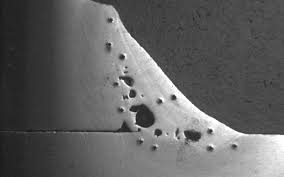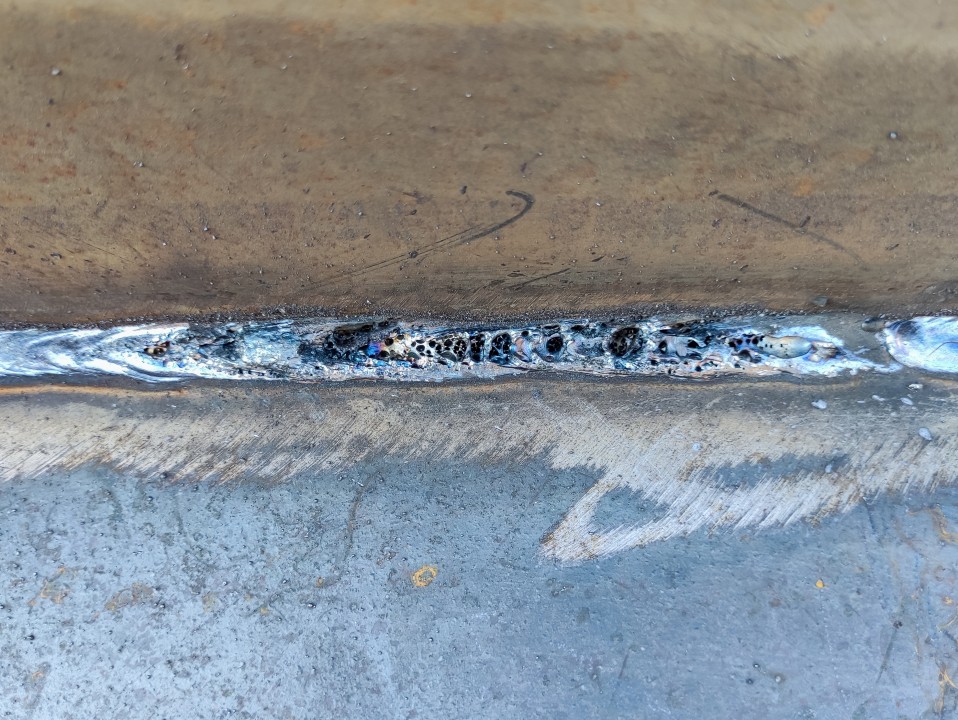How to Recognize What is Porosity in Welding and Improve Your Technique
Wiki Article
Understanding Porosity in Welding: Exploring Reasons, Results, and Avoidance Strategies
As professionals in the welding market are well mindful, understanding the reasons, impacts, and avoidance techniques connected to porosity is vital for attaining durable and reliable welds. By delving into the root creates of porosity, analyzing its destructive impacts on weld top quality, and exploring reliable prevention techniques, welders can boost their knowledge and skills to produce premium welds continually.Common Causes of Porosity
Porosity in welding is mainly triggered by a mix of aspects such as contamination, inappropriate protecting, and inadequate gas protection during the welding procedure. Contamination, in the form of dirt, oil, or rust on the welding surface, creates gas pockets when warmed, leading to porosity in the weld. Improper shielding takes place when the securing gas, commonly utilized in procedures like MIG and TIG welding, is unable to completely shield the molten weld swimming pool from reacting with the surrounding air, resulting in gas entrapment and subsequent porosity. In addition, insufficient gas insurance coverage, commonly due to incorrect flow rates or nozzle positioning, can leave parts of the weld unprotected, enabling porosity to create. These variables collectively add to the formation of spaces within the weld, deteriorating its stability and potentially triggering structural concerns. Recognizing and dealing with these common reasons are crucial steps in protecting against porosity and making certain the quality and strength of bonded joints.Results on Weld Top Quality
The visibility of porosity in a weld can significantly compromise the total high quality and stability of the welded joint. Porosity within a weld produces spaces or cavities that deteriorate the framework, making it more susceptible to cracking, rust, and mechanical failure.Moreover, porosity can impede the effectiveness of non-destructive screening (NDT) methods, making it challenging to detect various other issues or interruptions within the weld. This can result in considerable security issues, especially in critical applications where the structural integrity of the bonded parts is critical.

Prevention Techniques Summary
Given the destructive impact of porosity on weld top quality, reliable avoidance methods are crucial to keeping the structural stability of bonded joints. One of the main avoidance techniques is thorough cleaning of the base materials prior to welding. Impurities such as oil, grease, rust, and wetness can add to porosity, so ensuring a tidy work surface area is important. Appropriate storage space of welding consumables in completely dry conditions is likewise important to stop wetness absorption, which can lead to gas entrapment throughout welding. Furthermore, picking the proper welding specifications, such as voltage, existing, and take a trip speed, can help reduce the risk of porosity development. Making certain ample protecting gas circulation and protection is another critical prevention strategy, as inadequate gas protection can result in atmospheric contamination and porosity. Finally, appropriate welder training and qualification are crucial for applying preventative procedures properly and regularly. By integrating these prevention strategies into welding practices, the event of porosity can be dramatically minimized, bring about more powerful and more reliable welded joints.Significance of Proper Protecting
Appropriate protecting in welding plays an important function in protecting against climatic contamination and making certain the honesty of find out bonded joints. Protecting gases, such as argon, helium, or a mixture of both, are commonly made use of to safeguard the weld pool from responding with elements airborne like oxygen and nitrogen. When these responsive aspects enter call with the warm weld pool, they can cause porosity, leading to weak welds with reduced mechanical residential or commercial properties.
Inadequate protecting can result in numerous problems like porosity, spatter, and oxidation, endangering the architectural honesty of the welded joint. For that reason, adhering to proper protecting techniques is important to produce premium welds with marginal issues and make sure the longevity and dependability of the bonded parts (What is Porosity).
Monitoring and Control Approaches
Exactly how can welders effectively keep an eye on and manage the welding process to make sure optimal results and stop flaws like porosity? One secret approach is with making use of innovative surveillance innovations. These can consist of real-time tracking systems that give feedback on criteria such as voltage, existing, take a trip speed, and gas circulation rates. By continually monitoring these variables, welders can identify deviations from the ideal problems and make immediate adjustments to avoid porosity formation.
Furthermore, executing appropriate training programs for welders is essential for keeping an eye on and controlling the welding process properly. What is Porosity. Informing welders on the value of keeping regular specifications, such as correct gas securing and take a trip speed, can help prevent porosity concerns. Normal evaluations and certifications can likewise ensure that welders are proficient in tracking and managing welding processes
Furthermore, the use of automated welding systems can enhance monitoring and control abilities. These systems can exactly control welding specifications, lowering the probability of human mistake and ensuring regular weld high quality. By incorporating innovative tracking innovations, training programs, and automated systems, welders can effectively monitor and control the welding process to lessen porosity flaws and achieve premium welds.
Final Thought

Report this wiki page